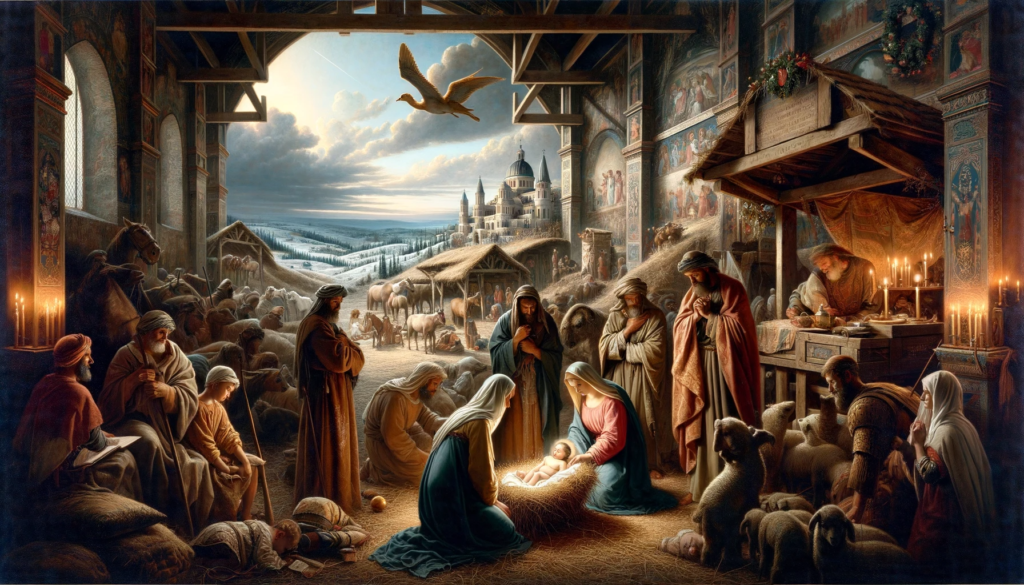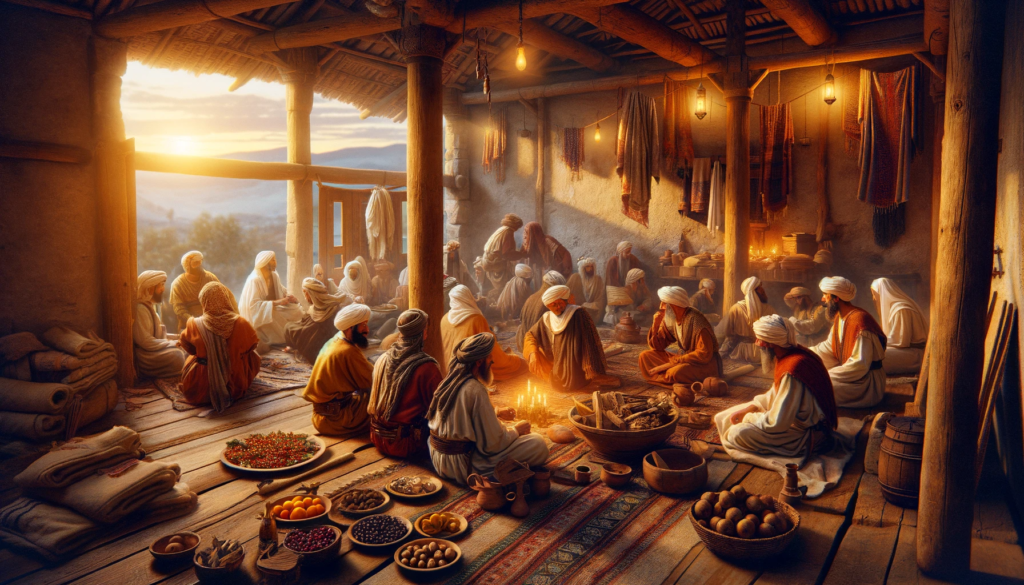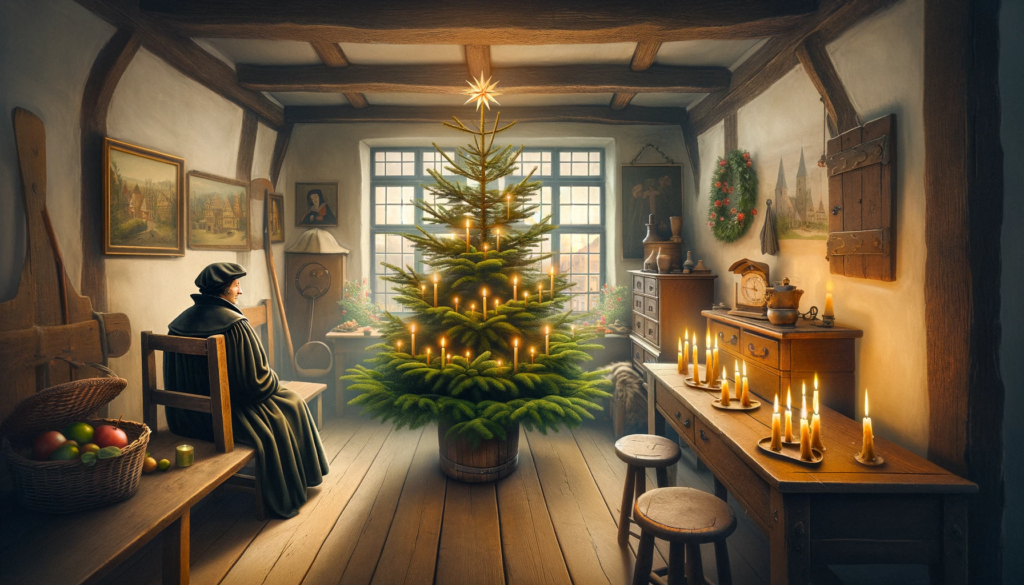
Christmas, one of the most beloved and widely observed celebrations around the world, is a time of joy, family gatherings, gift exchanges, and for many, deep religious significance. This festival, imbued with traditions and rituals, transcends the barriers of time and geography, uniting people from various cultures and beliefs in a common celebration. However, behind the twinkling lights, colorful decorations, and cheerful songs, there is a rich and multifaceted history that spans centuries and cultures.
In this article, we will dive into the historical roots and cultural evolution of Christmas. From the earliest records of celebrations honoring the birth of Jesus Christ to modern Christmas traditions, we will explore how Christmas, originally a Christian feast, has transformed into a global phenomenon celebrating the spirit of unity, generosity, and peace. We will examine the influences of different cultures and eras, unraveling how ancient practices intertwine with modern ones, creating the rich and diverse tapestry that characterizes Christmas today.
Through this journey, our goal is not only to better understand the origins and traditions of Christmas but also to appreciate how this celebration has adapted and thrived over time, remaining relevant and significant in an ever-changing world. Let’s discover together the true spirit of Christmas, which, despite its many transformations, continues to be a source of joy and hope for millions around the world.

I. Origins of Christmas
A. The Birth of Jesus
At its core, Christmas celebrates the birth of Jesus Christ, a central figure in Christianity. The biblical narrative, found in the Gospels of Matthew and Luke, tells the story of Jesus’ miraculous birth in Bethlehem, Judea. According to Christian tradition, Mary, a virgin betrothed to Joseph, a carpenter, gave birth to Jesus in a stable because there was no room at the inns in Bethlehem. This humble and sacred scene is often depicted in nativity scenes around the world during the Christmas season.
Interestingly, the Bible does not specify the exact date of Jesus’ birth. Historians and theologians have debated this issue over the centuries, but the lack of conclusive evidence makes the exact date a mystery. Despite this, the symbolic significance of this event transcends the need for chronological precision, emphasizing the message of hope, love, and redemption that Jesus represents for Christians.

B. Early Celebrations
The earliest celebrations of Christmas, as we know them today, do not have a clearly documented starting point, but it is known that they began in the early centuries of Christianity. Initially, these celebrations may have varied in form and expression, reflecting the local cultural and religious practices of the early Christians.
The choice of December 25th as the official date to celebrate Christmas was a decision of the Western Church in the fourth century. This choice may have been influenced by the intention to Christianize popular pagan festivals that occurred around the winter solstice, such as the Roman Saturnalia, a festival of joy and gift exchange. Integrating Christmas into this time of year may have been a strategy to facilitate the acceptance of the Christian feast in a predominantly pagan society. This decision not only incorporated some of the traditions of these pagan festivals but also established a fixed date for the celebration, helping to unify and solidify Christmas as an important pillar of the Christian liturgical calendar.
II. Influences and Syncretism
A. Pagan Influences
Christmas, as celebrated today, is the result of a complex process of syncretism, where distinct religious and cultural traditions merged over the centuries. One of the most significant influences on Christmas comes from pagan festivals, especially the Roman Saturnalia. The Saturnalia, a festival in honor of the god Saturn, was celebrated with great fervor in Rome. Characterized by feasting, gift exchange, and the temporary suspension of social conventions, this festival marked the winter solstice, a period when the days begin to grow longer, symbolizing the return of light.
The choice of December 25th for Christmas coincided with the period of Saturnalia and also with the birth of the invincible sun god (Sol Invictus) in the Roman Empire. This coincidence of dates was not accidental. By adopting December 25th, the Church sought to Christianize the popular celebrations of the winter solstice, incorporating them into the context of Christ’s birth. Thus, many of the joyful and communal customs of Saturnalia were absorbed and recontextualized within the celebration of Christmas.
B. Constantine and the Christianization of Christmas
The role of Emperor Constantine was crucial in formalizing Christmas as an important Christian holiday. Constantine, the first Roman emperor to convert to Christianity, played a key role in promoting and legitimizing Christianity within the Roman Empire. Under his reign, Christianity went from a persecuted religion to a state-sponsored faith.
The formalization of Christmas on December 25th, which occurred during or shortly after Constantine’s reign, reflects the emperor’s policy of harmonizing Christian practices with Roman traditions. By adopting and adapting pagan festivals like Saturnalia and integrating them into the Christian calendar, Constantine and the early church not only facilitated the cultural transition to Christianity but also enriched the celebration of Christmas with new dimensions and meanings.
This fusion of Christian and pagan traditions resulted in a Christmas that was both familiar to converted pagans and meaningful to Christians, helping to firmly establish the celebration of Christmas within the Christian tradition and popular culture.
III. Evolution of Christmas Traditions
A. From Rome to Turkey in the 2nd Century
The history of Christmas, in its early stages, is marked by a diversity of practices and celebrations, varying significantly from one region to another. The first documented celebrations of Christmas in Rome, in the year 336 A.D., represent an important reference point in the Christianization of this feast. However, earlier records, dating back to the mid-2nd century, point to the observance of Christmas in Turkey, suggesting an early spread of this celebration in the primitive Christian world.

These early celebrations, both in Rome and in Turkey, differed considerably from modern practices. Initially, the focus was more on worship and religious reflection than on festivities. In Rome, Christmas began to incorporate elements of local pagan festivals, while in Turkey, the celebrations were possibly more sober and community-centered, reflecting local traditions and customs.

B. Medieval and Renaissance
During the Middle Ages and the Renaissance, Christmas evolved significantly, absorbing and adapting cultural influences from all over Europe. In this period, the celebration of Christmas began to acquire many of the elements we recognize today.
In medieval Europe, Christmas was a feast of great importance in the liturgical calendar. Midnight masses, carols, and theatrical plays, often depicting scenes from the Nativity, became common practices. Churches played a central role in the celebrations, but the festivity was also observed outside the religious context with banquets, dances, and games.
Christmas music, in particular, underwent significant evolution during this period. Initially liturgical chants and hymns, Christmas songs began to incorporate vernacular languages and popular melodies, becoming more accessible and appealing to the common people.
The Renaissance, with its cultural flourishing, also contributed to the development of Christmas traditions. The emphasis on humanity and beauty expressed in art and music of the Renaissance found its way into Christmas celebrations, with the creation of artworks and musical compositions that are still revered today.
This era witnessed not only the consolidation of many Christmas practices but also the spread of these traditions throughout Europe, laying the groundwork for the global popularization of Christmas in the following centuries.

IV. The Christmas Tree and Santa Claus
A. Origin of the Christmas Tree
The Christmas tree, one of the most emblematic and beloved symbols of modern Christmas festivities, has a rich and varied history rooted in ancient traditions. Its origins can be traced back to ancient pagan rituals related to the winter solstice, where evergreen trees were decorated to symbolize life during the dark and cold winter months.
However, the tradition of bringing a tree indoors and decorating it specifically for Christmas has its origins in Germany during the 16th century. One of the first records of a decorated Christmas tree comes from Riga, Latvia, in 1510. Later, the tradition was popularized by Martin Luther, the leader of the Protestant Reformation, who, according to legend, brought a pine tree into his house and decorated it with candles. Luther would have done this to represent the beauty of the stars shining through the trees on Christmas night.
Over the centuries, the tradition of the Christmas tree spread throughout Europe and eventually the world, with different cultures adding their own unique touches to the practice. Today, the Christmas tree is a global phenomenon, adorned with lights, colorful ornaments, and often topped with a star, symbolizing the Star of Bethlehem.

B. Saint Nicholas and the Evolution of Santa Claus
The modern Santa Claus, a central figure in contemporary Christmas celebrations, also has its roots in ancient traditions and legends. The figure of Santa Claus was mainly inspired by Saint Nicholas of Myra, a 4th-century bishop known for his generosity and the miracles attributed to him. Saint Nicholas was especially famous for giving gifts secretly, which made him the protector of children and sailors.
Over the centuries, the legend of Saint Nicholas evolved and merged with other traditions and folk figures, such as Father Christmas in England and Sinterklaas in the Netherlands. In the 19th century, the image of Saint Nicholas began to transform into the Santa Claus we know today, largely thanks to Clement Clarke Moore’s poem “A Visit from Saint Nicholas” and Thomas Nast’s illustrations.
Santa Claus was portrayed as a cheerful and kind man, dressed in red and white, who travels in a sleigh pulled by reindeer and delivers gifts to children on Christmas Eve. Over the years, different cultures added their own nuances to this figure, making Santa Claus a beloved character around the world and an integral part of the Christmas celebration.

V. Christmas in the Modern World
A. Cultural Diversity
Christmas, in its contemporary form, is a global celebration that transcends religious and cultural boundaries. Around the world, this holiday is marked by a rich tapestry of traditions, customs, and food practices, reflecting the cultural diversity of the regions where it is celebrated.
In Western countries, Christmas is often associated with festive decorations, gift exchanges, Christmas trees, and the figure of Santa Claus. However, in many other parts of the world, celebrations take on distinct forms. For example, in Ethiopia, Christmas, known as Gena, is celebrated on January 7th with traditional games and masses. In Australia, where Christmas occurs during the summer, it is common to celebrate on the beach with barbecues. In the Philippines, the tradition includes “Simbang Gabi,” a series of dawn masses, and the display of colorful lanterns called “parol.”
Each culture incorporates unique religious, folkloric, and local elements, enriching the Christmas experience. The variations in Christmas foods are a vivid example of this diversity, ranging from panettone in Italy to bacalhau in Norway, and tamales in Mexico.

B. Christmas and Economy
Economically, Christmas has become a powerful force, significantly impacting global commerce. This time of year is crucial for retail, with many businesses recording a significant portion of their annual revenues in Christmas sales. The phenomenon of “Black Friday,” followed by “Cyber Monday,” marks the beginning of the Christmas shopping season in many countries, generating billions in sales.
The evolution of Christmas into a consumption festival has been both praised and criticized. On the one hand, it stimulates the economy, creates jobs, and provides an opportunity for businesses to thrive. On the other hand, this commercialization is sometimes seen as a departure from the original and deeper meaning of Christmas, focusing more on materialism than on the spirit of giving and sharing.
The modern Christmas, therefore, presents a fascinating dualism: it is a time of spiritual and religious importance for many, while simultaneously functioning as a significant engine for the global economy, reflecting the values and practices of an increasingly interconnected and diverse world.

VI. Reflections and Meanings
A. Christmas Beyond Religion
Although its roots are firmly planted in Christian tradition, Christmas has transcended its purely religious meaning to become a universal symbol of unity, solidarity, and family celebration. In many cultures, Christmas is a time when differences are set aside, and people come together to share moments of joy and love. This universality of Christmas allows people of diverse beliefs and backgrounds to participate in the festivities, adapting them to their own traditions and values.
In contemporary culture, Christmas plays a significant role in reinforcing family and community ties. It is a time when many strive to bring families together, revive old friendships, and reach out to those who may be alone or in need. This emphasis on unity and sharing reflects a deeper and more inclusive aspect of Christmas, highlighting its ability to bring people together beyond religious barriers.

B. The Christmas Spirit
The “Christmas spirit” is often cited as a feeling of kindness, generosity, and joy that permeates the air during the Christmas season. This spirit goes beyond the act of giving physical gifts; it is about spreading joy, offering kindness, and showing love and care for others. Christmas provides an opportunity to reflect on the blessings of life, recognize and help those who are less fortunate, and seek peace both internally and in relationships with others.
Additionally, Christmas is a time for personal and spiritual reflection. For many, it is a season to think about the past year and make plans for the future, inspired by the symbolism of renewal and hope that Christmas brings. The message of peace, love, and redemption at the heart of Christmas is something that many find inspiring and relevant, regardless of their faith or personal beliefs.
In summary, Christmas is a multifaceted celebration that uniquely combines joy, reverence, tradition, and modernity. Its impact goes far beyond the limits of religion, reaching into the depths of human experience and offering a message of hope and unity that is universally resonant.

Conclusion
Throughout this article, we have explored the fascinating journey of Christmas, a celebration that began as a religious observance of the birth of Jesus Christ and evolved into one of the most comprehensive and beloved festivities in the world. This evolution reflects not just changes in religion and society but also the inherent ability of Christmas to adapt and remain relevant in a constantly changing world.
From the earliest celebrations in ancient Rome and Turkey to the modern global traditions, Christmas has absorbed and reflected diverse cultural influences. The Roman Saturnalia, winter solstice festivals, and the veneration of Saint Nicholas are just a few of the many traditions that have intertwined to form the Christmas we know today. The introduction of the Christmas tree and the transformation of Saint Nicholas into the modern Santa Claus are examples of this festival’s ability to incorporate new elements and meanings.
At its core, Christmas is a celebration of unity, solidarity, and love. Whether through religious traditions or as a cultural and family occasion, Christmas offers an opportunity for people to reconnect with their loved ones, reflect on the past year, and look forward to the future with hope. Beyond its cultural impact, Christmas plays a significant role in the global economy, highlighting its influence in various spheres of modern life.
The “Christmas spirit,” with its emphasis on generosity, kindness, and joy, transcends religious and cultural boundaries, offering a universal message of peace and goodwill. Over the centuries, Christmas has proven to be more than a celebration; it has become a symbol of human capacity to find light in the darkness, to come together in times of adversity, and to celebrate life in all its forms.
Thus, as we continue to celebrate Christmas, whether in a church, around a lit tree, or simply in the company of loved ones, it is important to remember and cherish the rich tapestry of traditions and meanings that make this festival so special. Christmas, with its profound history and multiple meanings, remains a testament to the human spirit and our ongoing quest for connection, joy, and renewal.
Marciah Vales

References
- Holy Bible: For the narratives of the birth of Jesus Christ, as described in the Gospels of Matthew and Luke.
- “The History of Christmas” by Bruce David Forbes: An extensive analysis of the origins and evolution of Christmas over the centuries.
- “Christmas: A Candid History” by Bruce David Forbes: A book that provides a detailed view of the history of Christmas and how it has transformed over time.
- “The Battle for Christmas” by Stephen Nissenbaum: This book explores the history of Christmas, from its pagan roots to its celebration in modern culture.
- Encyclopedia Britannica: For information on the origins of Christmas, the influence of pagan festivals, and the evolution of traditions such as the Christmas tree and Santa Claus.
- “Inventing Christmas: How Our Holiday Came to Be” by Jock Elliott: An exploration of the creation and popularization of many of the Christmas traditions we know today.
- “Saint Nicholas of Myra, Bari, and Manhattan: Biography of a Legend” by Charles W. Jones: For the history and legend of Saint Nicholas and his transformation into Santa Claus.
- Academic articles and historical publications on Christmas celebrations in antiquity, including studies on the Roman Saturnalia and the Christianization of the festival.
- Cultural and anthropological publications: For information on the diversity of Christmas celebrations around the world and their cultural implications.
- Economic reports and market studies: For analysis of the economic impact of Christmas on global trade and the evolution of Christmas as a consumption festival.





